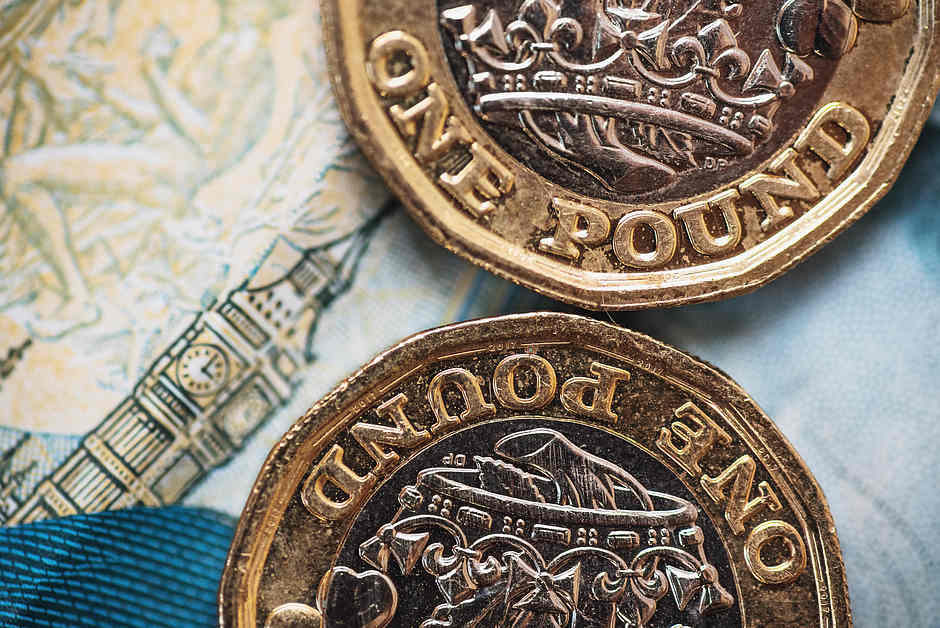GBP/USD climbs back closer to mid-1.3100s, eyes FOMC/BoE meetings this week
- GBP/USD kicks off the new week on a positive note amid the prevalent USD selling bias.
- Rising bets for a 50 bps Fed rate cut and the upbeat market mood undermine the buck.
- Bulls might refrain from placing aggressive bets ahead of the key central bank event risks.

The GBP/USD pair attracts some dip-buying on the first day of a new week amid relatively thin trading conditions on the back of a holiday in China and Japan. Spot prices currently trade around the 1.3135-1.3140 region, up just over 0.10% for the day and remain close to a one-week high touched on Friday amid the prevalent US Dollar (USD) selling bias.
The USD Index (DXY), which tracks the Greenback against a basket of six currencies, languishes near the year-to-date (YTD) low set in August amid expectations for a more aggressive policy easing by the Federal Reserve (Fed). In fact, traders are pricing in a greater chance that the US central bank will lower borrowing costs by 50 basis points (bps) later this week after data released last week provided further evidence that inflation in the US was subsiding. This keeps the US Treasury bond yields depressed near the 2024 low and the USD bulls on the defensive.
Apart from this, a generally positive risk tone further undermines the Greenback's relative safe-haven status. The British Pound (GBP), on the other hand, benefits from expectations that the Bank of England (BoE) will loosen policy by less than the Fed over the next year. The markets, however, are still betting on more BoE rate cuts, especially after data released last week pointed to a slowdown in the UK wage growth and a flat GDP print for the second straight month in July. This might hold back bulls from placing aggressive bets around the GBP/USD pair.
Investors might also prefer to move to the sidelines ahead of this week's key central bank event risks. The Fed is scheduled to announce its decision at the end of a two-day policy meeting on Wednesday. This will be followed by the BoE meeting on Thursday, which will play a key role in influencing the next leg of a directional move for the GBP/USD pair. Nevertheless, the fundamental backdrop favors the USD bears and supports prospects for an extension of the pair's bounce from the 1.3000 psychological mark, or a multi-week low touched last Wednesday.
Fed FAQs
Monetary policy in the US is shaped by the Federal Reserve (Fed). The Fed has two mandates: to achieve price stability and foster full employment. Its primary tool to achieve these goals is by adjusting interest rates. When prices are rising too quickly and inflation is above the Fed’s 2% target, it raises interest rates, increasing borrowing costs throughout the economy. This results in a stronger US Dollar (USD) as it makes the US a more attractive place for international investors to park their money. When inflation falls below 2% or the Unemployment Rate is too high, the Fed may lower interest rates to encourage borrowing, which weighs on the Greenback.
The Federal Reserve (Fed) holds eight policy meetings a year, where the Federal Open Market Committee (FOMC) assesses economic conditions and makes monetary policy decisions. The FOMC is attended by twelve Fed officials – the seven members of the Board of Governors, the president of the Federal Reserve Bank of New York, and four of the remaining eleven regional Reserve Bank presidents, who serve one-year terms on a rotating basis.
In extreme situations, the Federal Reserve may resort to a policy named Quantitative Easing (QE). QE is the process by which the Fed substantially increases the flow of credit in a stuck financial system. It is a non-standard policy measure used during crises or when inflation is extremely low. It was the Fed’s weapon of choice during the Great Financial Crisis in 2008. It involves the Fed printing more Dollars and using them to buy high grade bonds from financial institutions. QE usually weakens the US Dollar.
Quantitative tightening (QT) is the reverse process of QE, whereby the Federal Reserve stops buying bonds from financial institutions and does not reinvest the principal from the bonds it holds maturing, to purchase new bonds. It is usually positive for the value of the US Dollar.
Author

Haresh Menghani
FXStreet
Haresh Menghani is a detail-oriented professional with 10+ years of extensive experience in analysing the global financial markets.

















